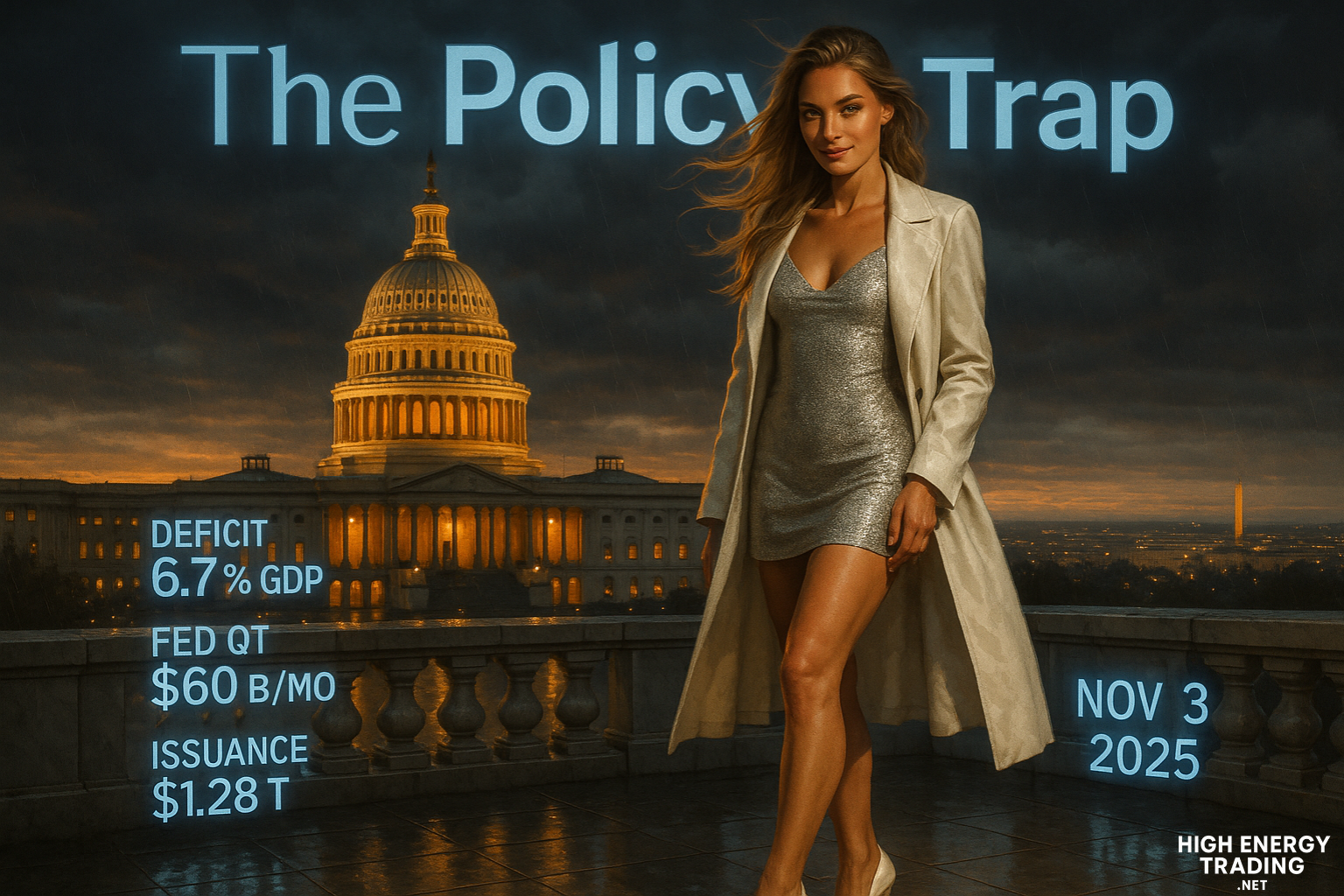Wall Street’s Summer Lull Meets an Earnings Minefield
The stock market has spent July drifting upward as if nothing in the macroeconomic or political landscape could spoil the picnic. The S&P 500 notched another closing high this week, volatility gauges hover near four-year lows, and options traders are wagering that next week’s parade of corporate earnings will be little more than background music.
History suggests otherwise.
A nap priced into JPMorgan
JPMorgan Chase, the nation’s largest bank and a bellwether for the financial sector, reports results before the opening bell on Tuesday. The cost of a one-day straddle—an options position that profits if the share price swings sharply in either direction—implies a move of roughly 2 percent. That is the smallest pre-earnings expectation for JPM since the summer of 2021, according to data from Trade Alert.
“Two percent is basically a shrug,” said Meera Patel, head of equity-derivatives strategy at Catalyst Capital, adding that the number “doesn’t square with the sheer list of things that could jolt a money-center bank.” Ms. Patel points to three potential shock lines buried in the release: net-interest income if Federal Reserve rate-cut timing slips, mounting credit-card losses among stretched consumers, and the one-time pop JPM earned last year from underwriting the artificial-intelligence IPO rush.
A year ago, when Wall Street was similarly complacent, JPMorgan surprised by posting record trading revenue and the stock jumped more than 5 percent in a single session. Traders who had sold volatility into the call spent the next week scrambling to hedge.
Tesla’s high-wire act
If banks are priced for boredom, Tesla is priced for theater. The electric-vehicle maker hosts its long-promised “Robotaxi reveal” after the bell on Wednesday, and once again options markets appear to be dozing. The implied swing is about 6 percent—hefty for most companies, but modest by Tesla standards, especially when Chief Executive Elon Musk is expected to promise full autonomy on a tight timeline.
“Every time Musk uses the word ‘robotaxi,’ the share price behaves like a meme stock,” said Roberto Zhang, a portfolio manager at Velox Macro, who is short Tesla into the event. “If the demo under-delivers, six percent is a rounding error.”
Mr. Zhang noted that operating margins at Tesla have compressed for four consecutive quarters as the company cuts prices to defend market share in China and the United States. “A robotaxi sizzle reel might distract for a day,” he said, “but margins pay the bills.”
The Netflix churn question
Netflix closes the week with its report on Thursday afternoon. Analysts expect the streaming giant to deliver another solid quarter of subscriber growth, buoyed by its ad-supported tier and a crackdown on password sharing. Yet the options market, again, is sanguine: the implied move is roughly 6.5 percent, compared with an average actual move of 7 percent over the last three reporting cycles.
The danger is churn. “Everyone focuses on the headline sub number,” said Lauren Cohen, media analyst at Archipelago Research, “but if ad-tier users rotate out just as fast as they sign up, the stock gets punished.” Ms. Cohen points to rising competition from a combined Disney-Hulu-ESPN bundle that debuts this quarter.
Low VIX, high risk
The common thread is a market that has grown comfortable pricing stability into everything from megabanks to meme-adjacent tech names. The CBOE Volatility Index sits near 12, while skew—the premium investors pay for downside protection—is quietly climbing. “Low front-month VIX and elevated skew is the hall-mark of complacency,” Ms. Patel said. “It usually doesn’t end with everyone collecting theta and heading to the beach.”
Some professional traders are positioning for a volatility surprise. In the last two sessions, block trades totaling more than $30 million in premium crossed the tape in VIX August 15 calls. A separate flow in JPMorgan saw traders buy next-Friday 180-strike calls and puts simultaneously, betting the bank moves more than the market predicts.
What the pros are whispering
- Hedge funds are quietly long straddles on JPM and short XLF calls against them, a way to isolate a bank-specific jolt without paying for sector beta.
- Macro desks like the Tesla-Musk headline risk as an intraday volatility scalp: go long near-dated puts and delta-hedge aggressively if the video demo fails to dazzle.
- Event-driven funds are dipping into Netflix out-of-the-money put spreads that cost pennies—“lottery tickets,” one trader called them—on the chance churn headlines trump subscriber gains.
Those positions are still small by historical standards, signaling that the wider market remains convinced nothing bad—or spectacular—will happen.
A reality check for investors
Earnings seasons with the narrowest implied moves have a habit of delivering the widest actual swings. In July 2023, when options underpriced volatility in the same three names, JPM rose 5 percent, Tesla collapsed 9 percent after margins disappointed, and Netflix whipsawed 8 percent once subscriber numbers failed to translate into revenue beats.
That backdrop leaves investors with a choice. One can accept the market’s soothing odds, or remember that the biggest shocks often come wrapped in the smallest expectations.

.png)


